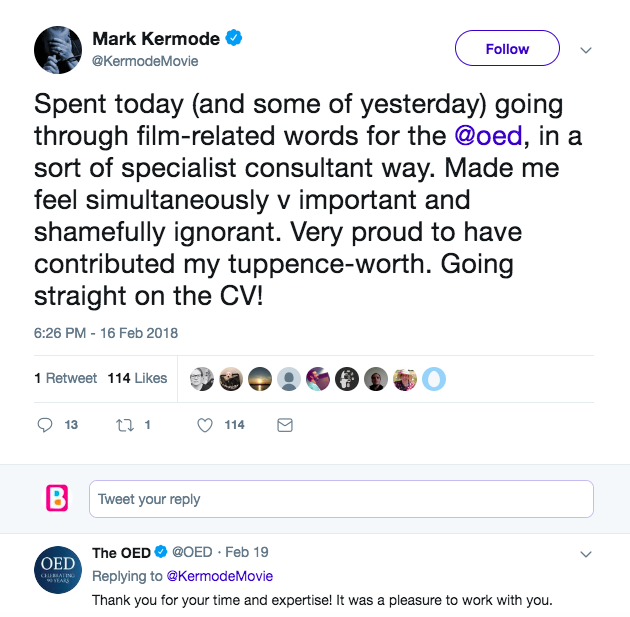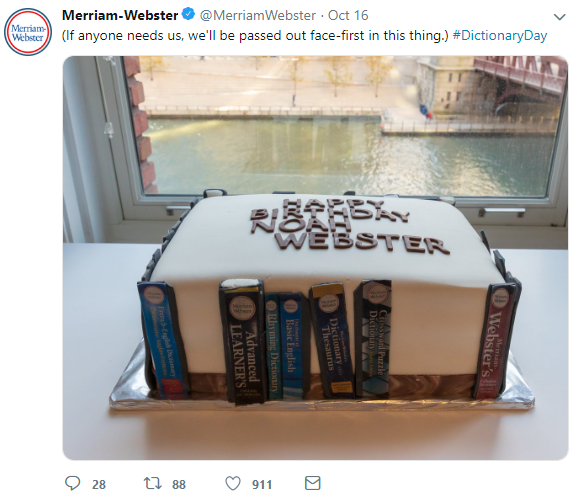Redefining Content
My definition
My definition
My definition is this.
What’s the definition of a boombastic content strategy?
Well, in part it’s the meaningful layering of stories; from the frequent, reactive fleet-of-foot opportunities to engage around what’s topical; to hub-based ‘rewards’ of educational and entertaining games and tools; with slower-burn blogs that reveal authority around passions; and campaigns that punch-through to show distinctiveness.
Sorry, it’s not a very catchy definition. But then I’m not a lexicographer. And it’s the dictionary makers - the ones with all the meanings - who are showing themselves to be switched-on content-led brand communicators.
Look-it-up. The Oxford English Dictionary (OED) and Merriam-Webster in the US aren’t the old, dog-eared, dusty things we might’ve once imagined, growing up. They’ve grabbed the digital space very effectively.
Of course, it helps to have a content bank of the definitions to 230,000 words (OED) and nearly 500,000 in Merriam-Webster. Side note: why so many more in American-English?
It’s not just because POTUS keeps making words up, it turns out the two dictionaries have different philosophies. M-W is ‘synchronic’ so it concentrates on current, active vocabulary. OED is ‘diachronic’, written from a historical perspective. So OED often requires longer evidence of usage before a word gets-in.
But they have ‘doing content well’ in common. Here’s a few examples.
Currency
At the sharp end of reach and engagement, they each enter the current conversation with their content. Vigilant and data-driven, they’re poised on the leading-edge, for the definitions we’re searching for, or the quirky word-use and misuse. When Trump was accused of bringing in ‘ringers’ to cheer at a visit to the CIA, M-W posted this.
Width
Or reach. OED cleverly use influencers (whether they call them influencers, or just expert collaborators) when they are seeking to define new words. Here they’ve used one of the best-known (and followed) movie critics - Mark Kermode - to help them define film-maker words like Lynchian.
And then someone like Laura Dern, the actress, adds their amplification…
redefining-content-marketing
Depth
Layered from the gateway of the quick bon mot of a tweet, audiences with word-passions are able to indulge in their favourite thing, showing off. So there is deeper blog article content, and games, tests and quizzes on the site, as links get followed.
content-marketing-vocabulary
Voice
We probably think of dictionaries as dispassionate, neutral things, but they’ve got attitude. No surprise when you read some of Samuel Johnson’s snarky and quirky entries in the original dictionary. Defining ‘Lunch’ (“as much food as one’s hand can hold.”) and his own job as ‘lexicographer’ (“a harmless drudge” who “busies himself in tracing the original and detailing the signification of words.”)
Susie Dent’s cheeky, smart and risque bants on ‘8 out of 10 cats does countdown’ show that she’s no drudge.
And what are dictionaries, if not repositories of relevance? On social, today’s dictionaries are less snarky than Samuel Johnson might’ve been if he had a twitter account, but they’re still pointedly on-point with their social media vernacular. We’re not buying, for a minute, the coy protests of ‘we’re only helping to answer misunderstandings’. Some of the social posts of Merriam-Webster are trolling at its most refined. When President Trump posted a misspelled “unpresidented” tweet, Merriam-Webster tweeted a definition of “huh.”
content-marketing-voice
What does it all add up to?
We crunched some numbers, and it turns out the engagement rate for these accounts is something most brands - arguably with a sexier product - would envy. OED has an overall engagement rate of 0.06%, slightly higher than average (0.05%), but Merriam-Webster has an average of a whopping 0.19%. It’s their creativity, humanity and sense of fun that’s so appealing to audiences; endeavours like their celebration of Dictionary Day that generate so much participation (and well played for properly owning and committing to what we like to call a “calendar hook” opportunity):
content-marketing-adds-up
With 38,000 likes of this tweet, that meant 38,000 words they had to post. How many other brands could command such huge engagement on one tweet?! They bravely ploughed on for 100 tweets with 100 words including psychrophilic, octothorpe and horseface before calling it a day. Even that was a feat, and peppering those tweets were pauses for breath like this:
ill-advised-content
And this:
ill-advised-content-marketing
This wonderfully reminds you that there is a human person at the end of those tweets, not just three rounds of sign off and a fancy scheduling tool (and even those tweets got loads of engagement).
merriam-webster-cake
Find out how we can help drive SEO growth for your brand with our content marketing services.










